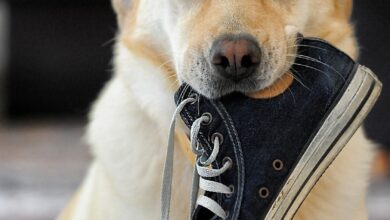
BY STAFF WRITER
Labradors are strong, food-driven, and highly social, which can lead to common behaviours like pulling on the leash, begging at the table, or barking at strangers. Below are step-by-step personalized training plans for each behaviour.
Pulling on the Leash: Teaching Loose-Leash Walking
Why Do Labradors Pull?
Excitement: They want to explore fast.
Lack of Leash Training: Pulling gets them where they want to go.
Reinforcement: If pulling moves them forward, they’ll keep doing it.
Goal: Teach your Lab to walk calmly on a loose leash without pulling.
Step-by-Step Loose-Leash Walking Plan
Use the Right Equipment
- Front-clip harness reduces pulling.
- A standard 4-6ft leash (avoid retractable leashes).
- Teach the “Be a Tree” Method
- The moment they pull, STOP walking completely.
- Wait for the leash to loosen. When it does, reward with “Yes!” and continue. This teaches them pulling gets them nowhere.
- Reward Walking at Your Side
- Hold a treat at your side and reward for walking next to you.
- Say “Let’s go!” and move forward when they stay by your side.
- Use small, frequent treats to reinforce calm walking.
- Change Direction to Regain Focus
- If they pull ahead, turn and walk the opposite way.
- Praise them when they follow.
- This teaches them to pay attention to your movement.
- Training Sessions: Short, 5-10 minute daily walks.
Practice in Low-Distraction Areas First, then move to busier places.
Common Mistakes:
- Pulling back on the leash—this just makes them pull harder.
- Letting them pull sometimes—consistency is key!
Begging for Food: Stopping Table Begging
Why Do Labradors Beg?
Food Motivation: Labs love to eat!
Past Rewards: If they got table scraps once, they’ll keep trying.
Attention-Seeking: Staring, whining, or nudging often gets them food.
Goal: Teach your Lab that begging never works and food only comes from their bowl.
Step-by-Step Training Plan for No Begging
- Completely Ignore Begging
- No eye contact, no talking, no pushing them away.
- If they whine, turn away or leave the room.
- Reward only when they are calm and not begging.
- Teach a “Go to Your Place” Command
- Before meals, guide them to a dog bed or mat.
- Reward them for staying there while you eat.
- Gradually increase how long they stay before rewarding.
- Feed Them Before You Eat
- A full dog is less likely to beg.
- Give a food puzzle or stuffed Kong to keep them occupied.
- Stop Giving Table Scraps Completely
- If one family member sneaks food, begging will continue.
- Instead, use a special treat bowl to reward good behaviour after you eat.
Training Sessions: Reinforce during every meal.
Be Consistent: No one in the household should give table scraps.
Common Mistakes:
- Saying “No” but still feeding them – this rewards begging!
- Giving in sometimes—it only takes one success to reinforce begging.
Barking at Strangers: Teaching Calm Greetings
Why Do Labradors Bark at Strangers?
Excitement: They love people and want attention.
Alert Barking: They think they’re protecting you.
Lack of Socialization: They aren’t used to strangers.
Goal: Teach your Lab to greet strangers calmly without barking or jumping.
Step-by-Step Barking Training Plan
- Teach the “Quiet” Command
- When they bark, say “Quiet” in a calm tone.
- Wait for a pause in barking and reward with “Yes!” and a treat.
- If they keep barking, ignore them until they stop, then reward.
- Desensitize to Strangers
- Ask a calm friend to help with training.
- Have them approach slowly while you keep your Lab’s focus on you.
- Reward calm behaviour. If barking starts, have the person walk away.
- Reward Calm Greetings
- Before a greeting, ask for a sit.
- If they stay calm, they get attention and praise.
- If they bark or jump, the person turns away (no reward).
- Use a Controlled Environment
- Start training indoors with familiar people, then move to outdoor settings.
- Slowly introduce busier areas (parks, pet stores).
Training Sessions: 5-minute controlled greetings, multiple times per week.
Socialization Walks: Expose them to different people in a calm way.
Common Mistakes:
- Yelling—this sounds like barking and excites them more.
- Letting guests greet when they’re barking—this rewards the behaviour.
Final Training Tips for Success
Be Consistent: Use the same commands daily.
Keep Sessions Short: 5-10 minutes for best focus.
Reward the Right Behaviour: Only reward calm, not reactive, behaviour.
Exercise First: A tired Lab is easier to train.






